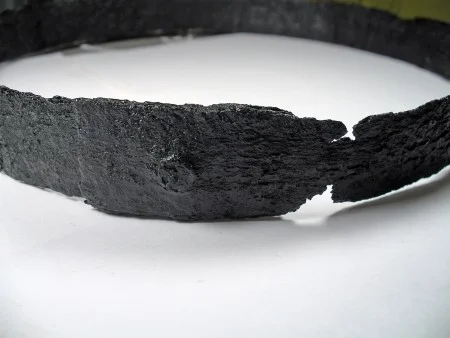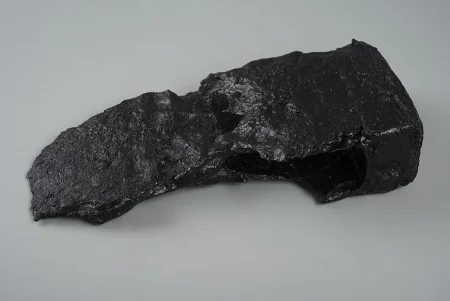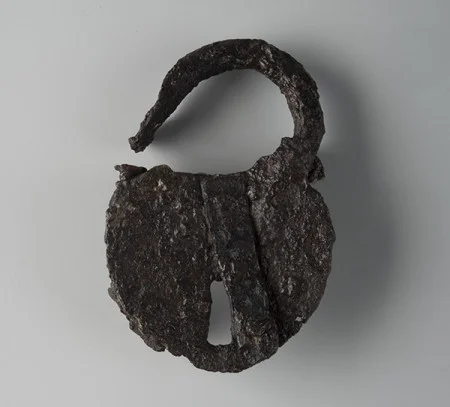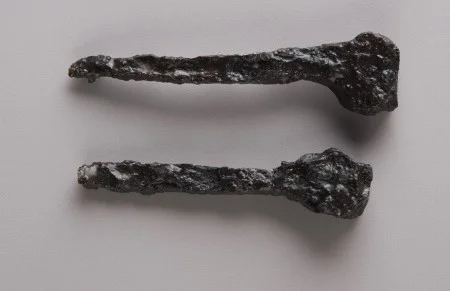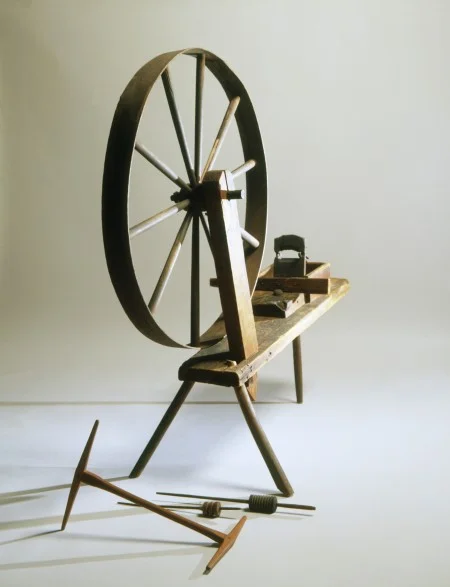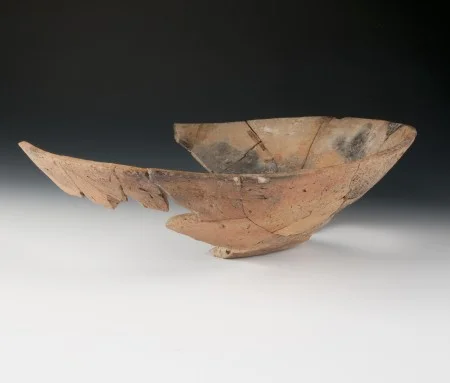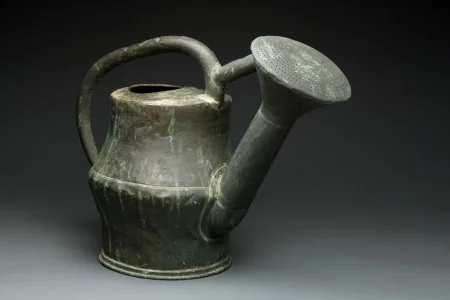In 1799, more than 50 enslaved men and women were trained in specific trades that kept parts of Mount Vernon’s operation self-sufficient.
Stationed primarily at Mansion House Farm and the gristmill-distillery complex several miles away, these individuals used their skills to make tools and textiles, care for livestock, process food, and construct and repair many of Mount Vernon’s buildings, including the Mansion itself. Washington sometimes hired white craftsmen to provide training or supervision.
Coopers
In 1799, Tom, Moses, and Jacob served as Mount Vernon’s coopers. Based at the gristmill and distillery complex, they made and mended barrels for storing both solids (flour, fish, soap) and liquids (whiskey, water, milk). Metal bands or wooden hoops held together the wooden staves of the barrel. Coopers also made pails, buckets, and tubs.
Distillers
Mount Vernon’s distillery was the largest in the nation in 1799, producing more than 11,000 gallons of whiskey. Enslaved distillers Hanson, Peter, Nat, Daniel, James, and Timothy performed the hot and tiring work of making whiskey from a combination of rye, corn, and malted barley. These men likely slept above the distillery during the busy season.
Learn moreCarpenters
Sambo Anderson, Isaac, James, Davy, Joe, and Simms built and repaired plows, carts, wheels, rakes, fences, fishing boats, and coffins, as well as structures like barns, storehouses, and houses for overseers. The carpenters also worked on the Mansion itself, sometimes assisting white craftsmen whom Washington hired to make improvements.

Sambo Anderson
Sambo Anderson was captured as a child in Africa and taken to Virginia around 1750. At Mount Vernon, he served as a carpenter. After being freed by Washington’s will in 1801, Anderson continued to live on the estate and hunted to earn money. He was able to use his earnings to purchase the freedom of several enslaved relatives.
Blacksmiths
Enslaved blacksmiths Nat and George made and repaired tools and hardware for use on the plantation, including nails, hinges, hooks, horseshoes, and locks.
In 1772, Nat had been apprenticed to a local white craftsman to learn “the Art and Trade of Blacksmiths.” He returned to Mount Vernon after three years of training.
Archaeology at the site of the blacksmith’s shop has revealed remnants of the operation, including nails, several types of locks, a pintle (part of a hinge), and an iron chisel.
Grooms
As the primary mode of travel in the 18th century, horses required special care. Grooms Peter Hardiman and his teenage son Wilson fed, brushed, and exercised horses. The two enslaved men also organized the horse tack: saddles, halters, reins, and other leather equipment for riding and driving. Mount Vernon’s blacksmiths made horseshoes to protect the animals’ hooves.

Giles
As a postilion, Giles rode one of the horses that pulled Washington’s carriage. In this public position, he wore the red-and-white livery suit distributed to all enslaved men stationed in the house, as well as a cap with tassels. Giles became a trusted messenger of Washington and accompanied him on numerous trips away from Mount Vernon.
Textile Workers
Enslaved spinners, seamstresses, and knitters produced functional textiles and clothing for use on the plantation. Dolsey, Anna, Judy, and others used spinning wheels to turn flax into linen thread and wool into yarn.
Washington sometimes hired white artisans to weave these threads into cloth. Caroline, Charlotte, and Alice sewed the homespun textiles into shifts, breeches, and shirts for enslaved workers to wear. Peter and Sam knit yarn into stockings, part of each slave’s annual clothing rations.
Dairy Maids
Mount Vernon’s dairy produced milk, cream, butter, and cheese for the Washingtons’ table. Kitty, an enslaved woman, oversaw the dairy’s operations, with occasional help from her daughter Sinah. The women strained milk from the estate’s cows and poured the liquid into wide shallow ceramic milk pans. After 24 to 48 hours, the cream rose to the top and could be skimmed off with a wooden spoon.
Gardeners
Gardeners George and Harry tended flowers, vegetables, and fruit trees in Mount Vernon’s gardens and orchards. They were also frequently directed to maintain the landscape around the Mansion: cleaning work yards, cutting grass with scythes, pruning shrubs, transplanting and trimming trees, and smoothing the gravel pathways with heavy stone rollers.
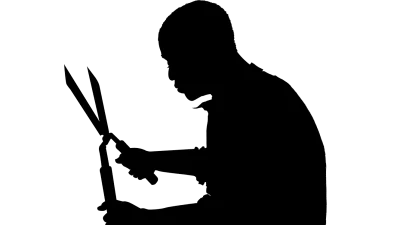
George
George was assigned to work as a gardener at the Mansion House Farm, where he probably lived in the greenhouse slave quarter with other craftsmen. His wife, Sall Twine, was a field worker on Dogue Run Farm, where she lived with the couple’s seven children. George likely saw them just once per week.
Reading between the Lines: The Landscape
George Washington designed Mount Vernon’s landscape to be a beautiful pleasure ground for his family and guests. It was primarily the labor of enslaved people that turned his vision of lawns, pathways, groves, and gardens into reality. Washington’s diary entries from 1785—the year he began a massive overhaul of his estate—reveal the extensive work necessary to alter the landscape.
“Continued with my jobbers to pound the Plaister of Paris as the Earth was too hard frozen to be dealt with.” – March 10, 1785
Washington experimented with plaster of Paris as a fertilizer for his lawns and gardens. Enslaved workers had to crush the hard substance into spreadable powder before it could be used.
“Began with James and Tom to work on my Park fencing.” – August 18, 1785
Washington’s carpenters constructed a park for tame deer near the Mansion. Enslaved people were skilled at building fences, which were necessary throughout the estate to keep livestock out of the fields.
“The ground being too wet, I employed the labourers who had been levelling the Lawn, in cleaning & weeding the Shrubberies.” – October 14, 1785
The lawns surrounding the Mansion were flattened by ditchers before gardeners planted them with grass. Moving the vast quantities of earth was grueling work, especially as the ground began to freeze.
“Set the People to taking up & planting small Pines in the Wilderness on the Right of the lawn.” – December 8, 1785
The far end of the bowling green on the Mansion’s west side featured groves of pine trees, which Washington called “Wildernesses.” His detailed plans for different varieties of trees near the Mansion required enslaved laborers to dig up trees elsewhere and transport them for replanting.
“At the back of the house…many male and female negroes were at work digging and carrying away the ground to make a level grass plot with a gravel walk round it…”
- Joshua Brookes, Mount Vernon visitor, February 1799
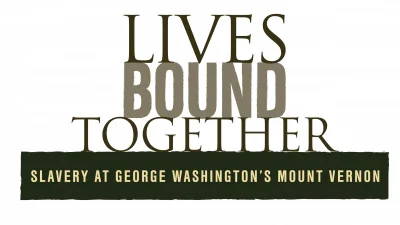
The content on this page was adapted from Lives Bound Together: Slavery at George Washington’s Mount Vernon, an exhibition on view from 2016–2020.
In 2025, Mount Vernon opened a reimagined version of the Lives Bound Together exhibition within the historic greenhouse quarters.
